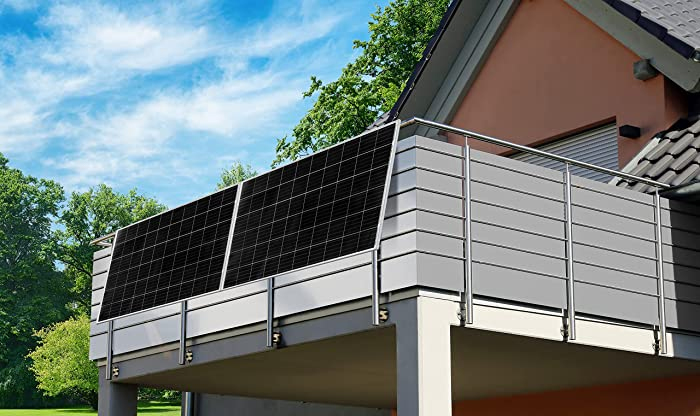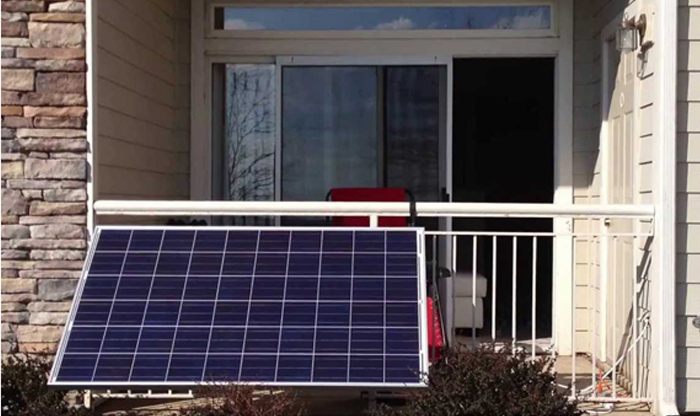In recent years, solar energy has become a crucial part of sustainable living, with various photovoltaic (PV) systems such as ground-mounted solar farms, solar rooftops, floating solar arrays, and carport solar systems gaining popularity. However, the energy landscape shifted dramatically after the Russia-Ukraine conflict led to a significant natural gas shortage across Europe. In response, European governments revised their energy policies to encourage the adoption of solar energy, leading to an increase in personal-use photovoltaic systems.
Homeowners with private rooftops, carports, or spare land quickly took advantage of this opportunity to install solar panels and reduce their dependence on traditional energy sources. However, millions of renters and apartment owners found themselves at a disadvantage, lacking the necessary space to install conventional solar systems. As a result, the concept of balcony solar panel installations emerged as a game-changer in 2023, providing an accessible solution for urban dwellers.

For millions of apartment residents and renters, balconies present the ideal location for solar panel installations. Unlike conventional rooftop solar systems, which often require large budgets and professional installation, balcony solar systems offer a flexible, cost-effective, and DIY-friendly alternative.
Accessibility and Affordability Traditional solar installations can be expensive and require a private rooftop or land. Balcony solar panels, on the other hand, provide an affordable entry point into solar energy, making renewable energy more accessible to urban residents.
DIY Installation Installing a solar panel on a balcony is simple and does not require professional solar installers. With basic tools and a proper mounting bracket, users can set up their own solar systems without the need for complex wiring or integration into the apartment’s behind-the-meter electrical grid.
Portability Unlike permanent rooftop installations, balcony solar panels can be easily removed and transported when relocating to a new residence. This flexibility makes them an attractive option for renters who move frequently.
Optimal Sun Exposure For residents living in the northern hemisphere, a south-facing balcony offers optimal sunlight exposure throughout the day, maximizing the efficiency of the solar panel. Properly positioning the panel at an adjustable angle ensures even better energy generation.
Energy Independence Even without being tied to the apartment’s electrical grid, a balcony solar panel can generate sufficient power for small appliances, charging stations, and emergency backup needs, reducing reliance on traditional energy sources.

Panel Size and Wattage: Compact panels with an output of 100-300W are ideal for limited spaces like balconies.
Adjustable Mounting Bracket: An adjustable angle bracket allows for better sun tracking, maximizing energy absorption.
Battery Storage: Adding a small battery storage unit can enhance energy usage efficiency by storing power for later use.
Local Regulations: Some buildings and cities may have restrictions on external solar installations, so it’s essential to check local policies before setting up a system.
As demand for personal-use solar energy continues to grow, balcony solar panels have emerged as the best solution for millions of renters and apartment dwellers worldwide. Their affordability, ease of installation, and portability make them the most practical way to harness solar energy in urban environments. In 2023, the best place to install a solar panel is no longer just on a private rooftop—it’s on your very own balcony.

 Xiamen TopFence Co.,Ltd.
Xiamen TopFence Co.,Ltd. No. 77, LingXia South Road, Huli District, Xiamen City, Fujian, China
No. 77, LingXia South Road, Huli District, Xiamen City, Fujian, China Tel: +8613365923720
Tel: +8613365923720
 Email: info@xmtopfence.com
Email: info@xmtopfence.com
 IPv6 network supported Sitemap
| XML
| Blog
| Privacy Policy
IPv6 network supported Sitemap
| XML
| Blog
| Privacy Policy


